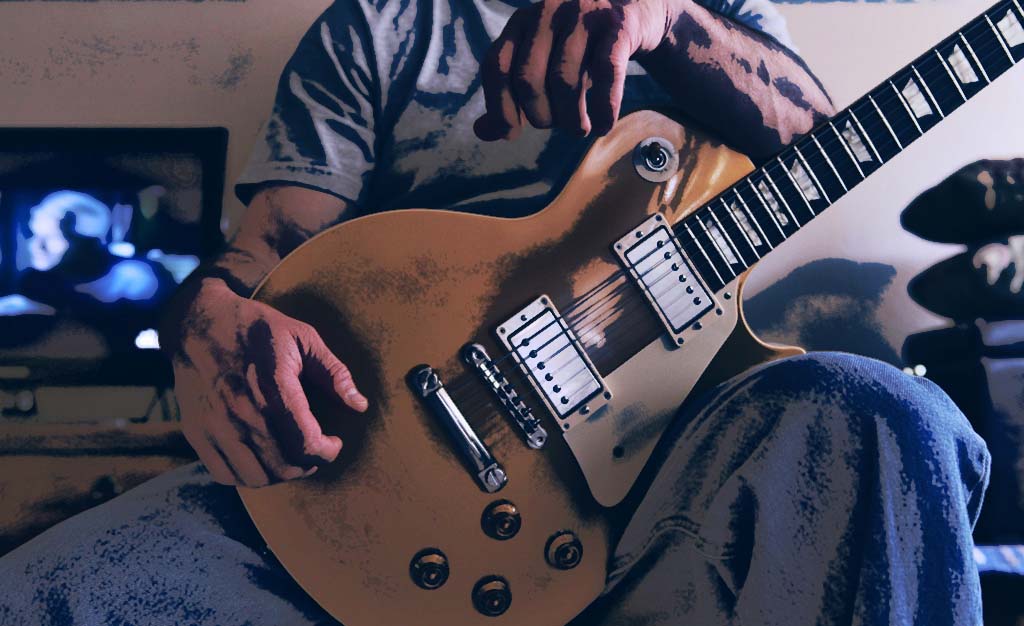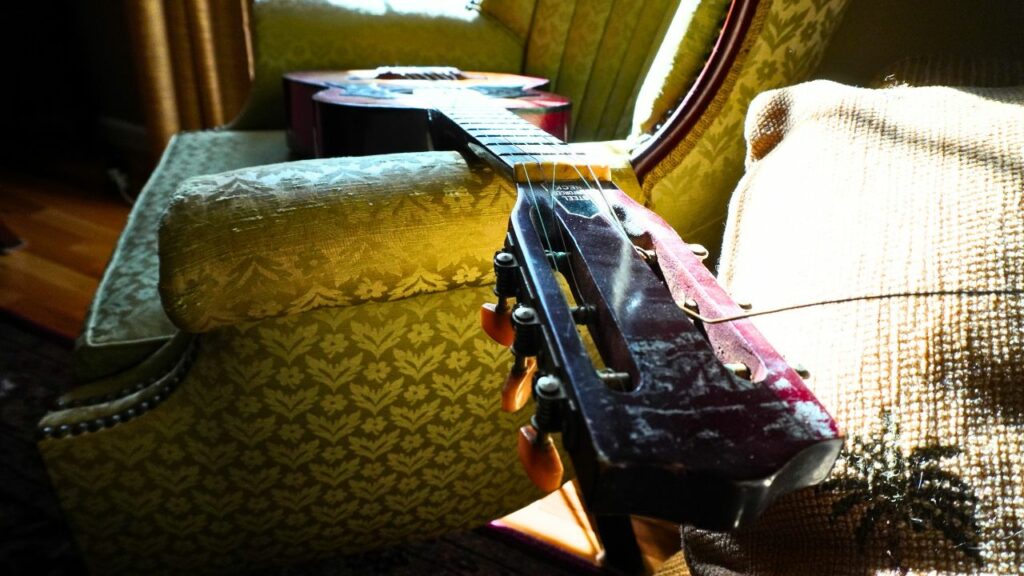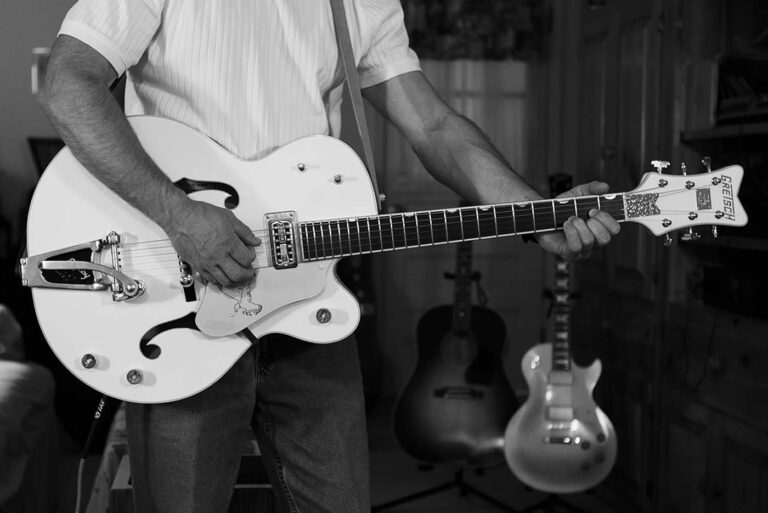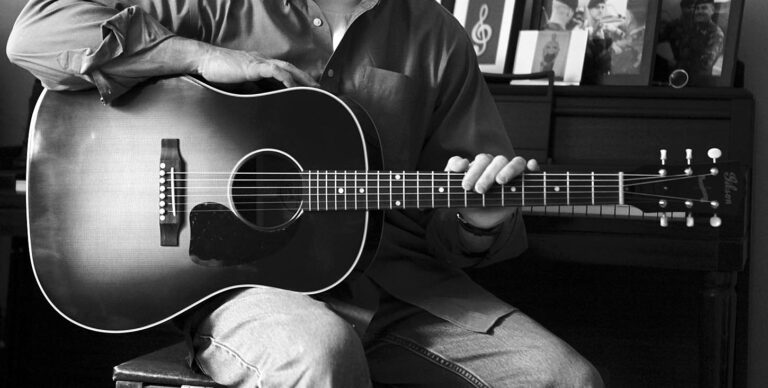Of course, there’s no “set-in-stone” time period for changing out one’s guitar strings; however, there are a few decent rules we can follow to ensure our guitars are always ready to go. Then again, if you’ve played guitar long enough, then you know as well as I do that putting on a new set of strings doesn’t guarantee one won’t break as soon as you strike the first chord. Since it’s impossible to tell the future, let’s just stick with those few basic rules I had started to mention…
The popular time-frame for changing one’s guitar strings tends to be about every 3-6 months, if played on a regular basis…
When in doubt, change them every 3-6 months
If you are playing the guitar pretty regularly , say 30 minutes to an hour each day, or every other day, then your strings will obviously undergo more wear and tear than if you are only playing periodically (once a week, or so). The oils from your skin, the heavy strumming (if you’re a heavy strummer), etc. will take their toll.
Changing out your strings this often, is really for those players that are just trying to keep their guitar in, “tip-top” shape. I.E. I have guitars that I haven’t played but every-so-often every month that I haven’t changed the strings on for a couple of years. Not the best way to treat your guitar(s). I’m just sayin’…
Related: “Am I too told to learn how to play the guitar?“
If your car stays in the drive way, or under cover in a garage, then it probably won’t need to be serviced very often. Same thing with your guitar if it’s kept in it’s case and in an environmentally controlled area, never being played but a few times a month, you can probably keep the same set of strings on it for a while (several months – a year, maybe)…
There are other things to consider though…
Change them before playing a live event
If you’re taking you favorite guitar with you to a live event, I would definitely recommend changing your strings prior to the first song of the first set. Of course, anytime you change the strings, don’t forget that you need to stretch them out – loosen them up a bit so that they stay in tune better with long periods of playing. So, you’ll want to change the out hours before the show (the day prior maybe).
Most of us that are fortunate enough to play a live gig every-now-and-then, are also fortunate enough to a have second, third, maybe a fourth guitar. If you are fortunate enough to have another guitar by your side, maybe change the strings on that one instead of your primary, or both. Having a second guitar ready to go is certainly quicker than changing out the strings…
When you first purchase your guitar
I guess this one should be at the top of the list / page, huh?…
Now-a-days, depending upon where you buy your guitar(s), you can take it home (or, have it delivered to you) already setup with a brand new set of strings on it.
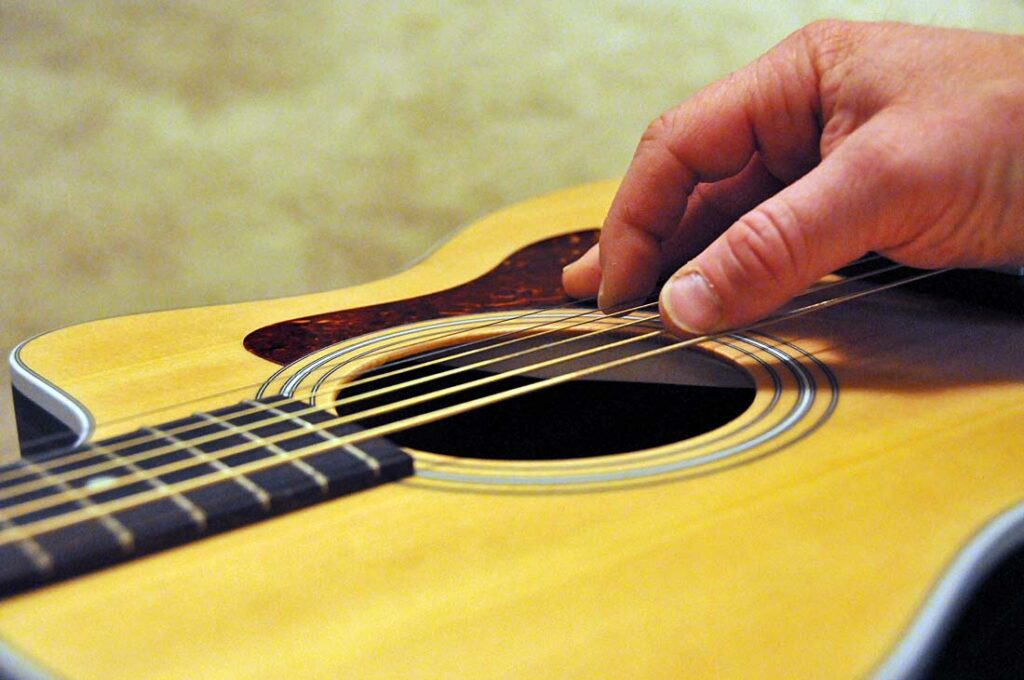
< More Guitar Photos From My Flikr Album >
Again, this really depends upon the retailer, and the model of guitar you are buying (how much money you are spending)…
The past couple of guitars that I’ve purchased from Sweetwater.com have undergone their “55 Point Inspection,” which ensures that each guitar that they sell (valued over $299) arrives “factory fresh,” and ready to play…
I’ve got to be honest here…. The guitar in the featured image of this post, a Gibson Gold Top Re-issue, has the same set of strings on it that came with it when I bought it… I never changed them out before finally selling it on eBay years ago…. “What?!, You sold it!” Yeah, I’ve never really been a Les Paul kind of player. I might get another in the future. Like, a Les Paul Junior with P90 single coil pick-ups, or something… not really sure…
Simply if you are noticing “tone issues”
The “no-brainer” time to change your strings, is when the tone of your guitar is starting to get a bit muddy. Once the sound starts fading a little, the strings are getting worn out. Once that brightness has left the strings, you will be much better off just changing out your strings and moving on… If you’ve waited until this point to change out your strings, you will usually notice and night and day difference when you do place the new strings on it… It will sound like a new instrument in some cases…
Before you start a new recording project
This kind of goes hand-in-hand with before playing a live event. If you’re not sure how long its been since you’ve changed them out, you would probably do better to just go ahead and do so before embarking on a new recording project.
At least, you will know that you’ve “checked that block” to ensure the best sound possible when recording (of course, there’s much more than strings to deal with when getting a good recording, but…..)…
Here’s a scenario for ya… You’ve started recording without changing your string because your guitar sounds “ok.” Eventually you break a string. You decide to do the right thing and change all strings out. Now, you notice that the guitar overall sounds so much better than before, letting you know that maybe you should’ve changed them out before the first song… Just change ’em out before pressing record (at least, when working on an important project)…
Things to consider when changing your strings
Keep the same gauge of strings on your guitar. If you’ve had your guitar setup with one gauge of string already, then it’s usually best to continue with that gauge of string. The various parts of the guitar (nut, saddle, etc.) are conditioned for that particular gauge and will work better if the gauge stays the same…
Like I mentioned earlier, change all the strings at once, instead of just one, or two strings, if possible. Every situation is different, but it is usually best to just ’em all out at once to ensure uniformity of sound. It’s not normally the best idea to combine new and old strings. Just scrap ’em all and start over. Of course, when playing live, you may have limited time. You change ’em out completely during a break, or after the show, etc. …
If you have the time and the materials, wipe down the fret and sound board areas that are normally covered by the strings, once you’ve taken them off the guitar. That crud can build up over time causing some unnecessary damage to your guitar…
In Conclusion
Again, there’s no set time for changing out your guitar strings. It’s up to the individual player. Just listen to the guitar to see if it’s starting to loose it’s “shine.” Consider changing them before playing out somewhere, or prior to an important recording session, etc…. And, when in doubt, just change ’em out every 3-6 months and you can’t go wrong…
Until Next Time!

